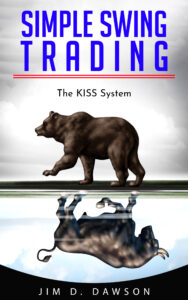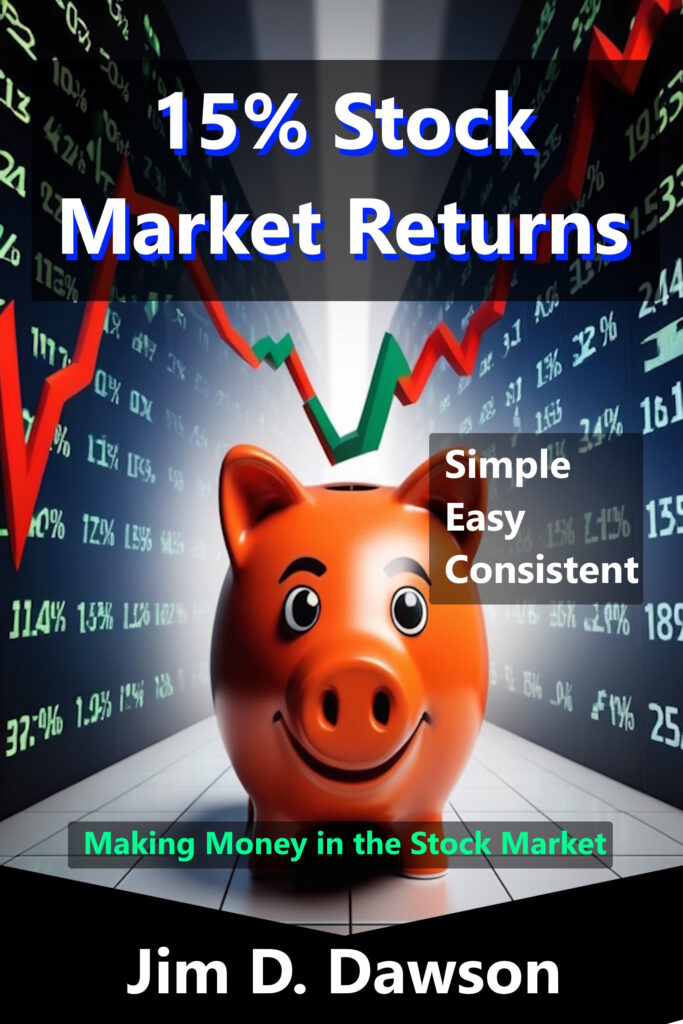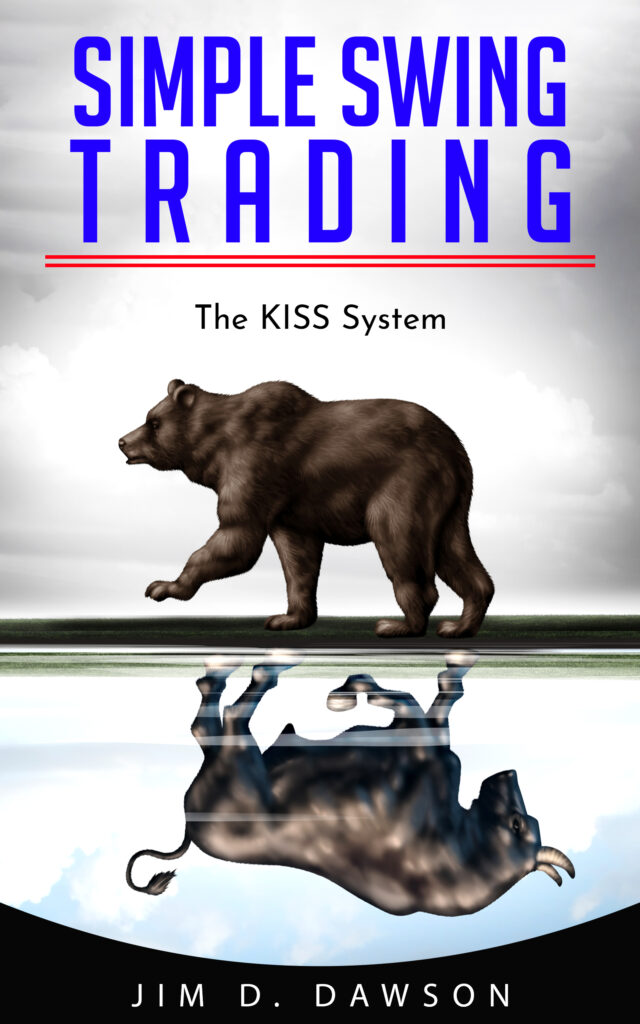Stock options offer a variety of strategies that traders can use to maximize returns, manage risk, or generate income. Among the most popular of these strategies are covered calls and naked calls. While both involve writing (selling) call options, they differ significantly in terms of risk exposure, potential returns, and overall strategy. This paper explores what covered calls and naked calls are, their key differences, and the risks associated with each approach.
 You can use my KISS (Keep It Simple Stupid) swing trading system with either shares of the stock or options. The KISS system is a 100% technical based analysis for ease of use and is fully scalable with proper portfolio and risk management.
You can use my KISS (Keep It Simple Stupid) swing trading system with either shares of the stock or options. The KISS system is a 100% technical based analysis for ease of use and is fully scalable with proper portfolio and risk management.
The KISS system will give you everything you need to understand price action, find long/short areas, set targets and most importantly you will learn where NOT to enter a trade.
CLICK HERE for more information.
Understanding Covered Calls
What is a Covered Call?
A covered call is an options strategy where an investor holds a long position in an underlying stock and sells (writes) call options on that same stock. The term “covered” refers to the fact that the investor owns the underlying asset, which “covers” the obligation to deliver the stock if the option is exercised. This strategy is often employed by investors looking to generate additional income from their stock holdings through the premium received from selling the call option.
How Covered Calls Work
The mechanics of a covered call are straightforward:
- Owning the Stock: The investor owns a specific number of shares of a stock, usually in multiples of 100, as each option contract typically represents 100 shares.
- Writing the Call Option: The investor sells a call option on the stock. This option gives the buyer the right, but not the obligation, to purchase the stock at a specified strike price within a predetermined time frame (until the option’s expiration).
- Collecting the Premium: The investor receives a premium for selling the call option. This premium is income that the investor keeps regardless of the stock’s performance.
- Possible Outcomes:
- If the stock price remains below the strike price until expiration, the option expires worthless, and the investor keeps both the stock and the premium.
- If the stock price exceeds the strike price, the option buyer may exercise the option, and the investor is obligated to sell the stock at the strike price, potentially capping their upside but still retaining the premium.
When to Use Covered Calls
Covered calls are typically used in the following scenarios:
- Income Generation: Investors use covered calls to generate additional income from their stock holdings, especially when they believe the stock will remain relatively stable or only slightly appreciate in the short term.
- Neutral to Slightly Bullish Outlook: This strategy is well-suited for investors who have a neutral to slightly bullish outlook on the stock. It allows them to profit from the stock price’s lack of significant movement while still earning the option premium.
- Lowering Portfolio Volatility: Covered calls can help reduce the overall volatility of a portfolio by providing a steady income stream and partially offsetting potential losses from a declining stock price.
Understanding Naked Calls
What is a Naked Call?
A naked call, also known as an uncovered call, is a riskier options strategy where an investor sells (writes) call options without owning the underlying stock. Since the seller does not hold the stock, they face potentially unlimited risk if the stock price rises significantly, as they would have to purchase the stock at a higher price to fulfill the contract if the option is exercised.
How Naked Calls Work
The process of writing a naked call is similar to that of a covered call, with a critical difference:
- Writing the Call Option: The investor sells a call option on a stock they do not own. This gives the buyer the right to purchase the stock at the strike price within the option’s expiration period.
- Collecting the Premium: Like with covered calls, the investor receives a premium for selling the call option, which is income they keep regardless of the stock’s performance.
- Possible Outcomes:
- If the stock price remains below the strike price until expiration, the option expires worthless, and the investor keeps the premium without any further obligations.
- If the stock price rises above the strike price, the option buyer may exercise the option. The investor would then need to purchase the stock at the prevailing market price, potentially much higher than the strike price, and sell it to the option buyer at the strike price, resulting in a loss.
When to Use Naked Calls
Naked calls are typically used in the following scenarios:
- Bearish Outlook: Investors use naked calls when they have a bearish outlook on the stock or believe that the stock price will not rise significantly in the near term.
- Speculative Income: Some traders use naked calls to generate speculative income from option premiums, betting that the stock price will stay below the strike price until expiration.
- Advanced Trading Strategy: Naked calls are generally considered an advanced strategy due to the high risk involved. They are not recommended for novice traders or those with low-risk tolerance.
Key Differences Between Covered Calls and Naked Calls
Covered calls and naked calls, while similar in concept, differ significantly in their risk profiles, potential returns, and suitability for different types of investors.
- Risk Exposure
- Covered Calls: The risk in covered calls is limited to the difference between the stock’s purchase price and the strike price, minus the premium received. The maximum loss occurs if the stock’s value drops to zero, but this loss is offset by the premium.
- Naked Calls: Naked calls carry theoretically unlimited risk. If the stock price rises significantly above the strike price, the investor could face enormous losses, as they would have to buy the stock at a much higher price to meet their obligations.
- Potential Returns
- Covered Calls: The return from a covered call strategy is capped at the strike price plus the premium received. If the stock price rises above the strike price, the investor misses out on any further gains beyond that point.
- Naked Calls: The return from a naked call is limited to the premium received, regardless of how the stock price moves. There is no cap on potential losses, which can far exceed the premium earned.
- Risk Management
- Covered Calls: This strategy is more conservative and can be part of a broader risk management approach. By owning the underlying stock, the investor has a built-in hedge against the obligation to sell the stock if the option is exercised.
- Naked Calls: Naked calls offer no such hedge, making them inherently riskier. They require diligent monitoring and possibly quick action if the stock price begins to rise unexpectedly.
- Margin Requirements
- Covered Calls: Margin requirements for covered calls are typically lower because the investor already owns the underlying stock, reducing the broker’s risk.
- Naked Calls: Naked calls usually have higher margin requirements due to the increased risk and potential for significant losses.
- Investor Suitability
- Covered Calls: Suitable for investors with a conservative to moderate risk tolerance, particularly those seeking to generate income from their existing stock holdings.
- Naked Calls: Best suited for experienced traders with a high risk tolerance, as this strategy requires careful market analysis and the ability to withstand potential large losses.
Risks Associated with Covered Calls and Naked Calls
Both covered calls and naked calls come with their own set of risks, and it’s important for investors to understand these risks before implementing either strategy.
Risks of Covered Calls
- Limited Upside Potential: One of the main risks of covered calls is that the investor forfeits the potential for unlimited gains. If the stock price rises significantly above the strike price, the investor must sell the stock at the strike price, missing out on further appreciation.
- Stock Price Decline: While the premium received from selling the call option provides some downside protection, it may not be enough to offset a significant decline in the stock price. If the stock’s value drops below the break-even point (purchase price minus premium received), the investor could still incur losses.
- Obligation to Sell: If the stock price rises above the strike price, the investor is obligated to sell the stock at that price, which may not align with their long-term investment strategy or goals.
- Opportunity Cost: By writing a covered call, the investor locks in a potential sale price (the strike price) for the stock. If the stock price rises significantly above this level, the investor loses the opportunity to sell at a higher price.
Risks of Naked Calls
- Unlimited Loss Potential: The most significant risk of naked calls is the potential for unlimited losses. If the stock price rises sharply, the investor could face enormous losses, as they would need to purchase the stock at a high price to fulfill their obligation.
- Margin Calls: Due to the high risk of naked calls, brokers typically require substantial margin deposits. If the stock price rises unexpectedly, the investor may face a margin call, requiring them to deposit additional funds or close the position at a loss.
- Volatility Risk: Naked calls are particularly sensitive to volatility. A sudden increase in the stock’s volatility can lead to a significant rise in the option’s price, resulting in potential losses for the investor.
- Market Timing: Naked calls require precise market timing and continuous monitoring. Even a small miscalculation or unexpected news event can lead to substantial losses.
- Psychological Stress: The unlimited risk associated with naked calls can lead to significant psychological stress, especially if the stock price begins to move unfavorably. This stress can lead to impulsive decisions, such as closing positions prematurely or doubling down on losing trades.
Conclusion
Covered calls and naked calls are two popular options strategies that can offer traders and investors opportunities to generate income and potentially enhance returns. However, they differ significantly in terms of risk, potential rewards, and suitability for different types of investors.
Covered calls provide a more conservative approach, with risks limited to the ownership of the underlying stock and the potential to generate steady income through premiums. This strategy is well-suited for investors with a neutral to slightly bullish outlook on the stock who are looking to generate additional income from their holdings


